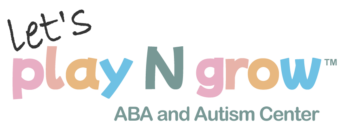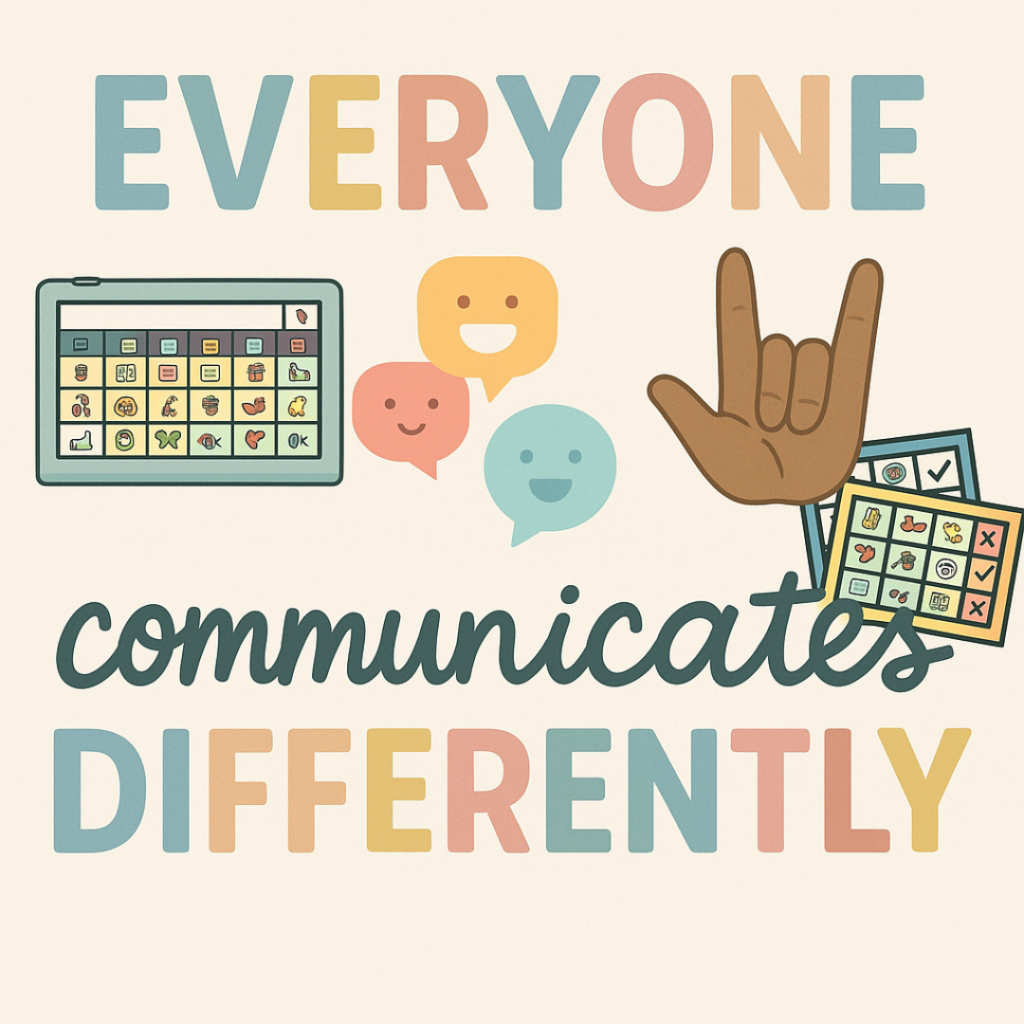If you’ve ever wondered when your child might say their first word—or if they ever will—you’re not alone. For many parents of children with autism, communication feels like one of the biggest question marks.
At Let’s Play N Grow, we believe every child can communicate—and our job is to help make that happen. Whether it’s with words, signs, pictures, or a communication device, we focus on helping your child find a voice that works for them.
Understanding Communication Beyond Words
For many kids with autism, spoken language isn’t the first or only way they express themselves. At Let’s Play N Grow, we celebrate all forms of communication—whether it’s:
- A sign for “help”
- A picture of a snack
- A button on an AAC device that says “I want bubbles”
- Or a single word spoken clearly for the first time
All of it counts.
All of it is progress.
How ABA Therapy Builds Functional Communication Skills
ABA therapy breaks big skills into small, teachable moments. And for communication, that means we meet your child exactly where they are.
We use:
- Motivation to teach requesting (“manding”)—because when a child sees that words or signs help them get their needs met, they’re more likely to use them.
- Naturalistic play to model language during activities your child already enjoys.
- Reinforcement to strengthen attempts at speech, signs, or device use.
- Prompting strategies to support language use, without overdoing it.
- Generalization so skills learned in therapy show up at home, school, and everywhere in between.
Our team tracks each type of communication—spoken or not—and celebrates every attempt. Because when your child learns that their voice matters, they’re more likely to keep using it.
What’s the Difference Between ABA and Speech Therapy?
Speech-language pathologists (SLPs) and BCBAs sometimes target similar goals—but we have different approaches.
| ABA Therapy | Speech Therapy |
| Focuses on function: using communication to access needs, reduce frustration, and increase independence | Focuses on form: teaching language development, articulation, and expressive/receptive skills |
| Breaks behavior down into steps and uses reinforcement to shape progress | Uses structured language activities and play-based approaches to build vocabulary and grammar |
| Can incorporate AAC, sign language, and verbal behavior approaches | Often provides direct instruction in speech production, social language, and feeding or swallowing if needed |
ABA is not a replacement for speech therapy—and it’s not just for behavior. It’s a powerful tool for teaching how and why we communicate in the first place.
Using AAC and Sign Language in ABA Therapy
Some parents worry that using sign language or an AAC device will stop their child from speaking. But studies show the opposite.
One large review (Millar, Light & Schlosser, 2006) found that AAC use increased or had no negative impact on speech in over 89% of children studied.
In fact, giving kids a reliable way to communicate:
- Reduces frustration
- Builds confidence
- Opens the door for more speech
We honor every attempt—whether it’s a sound, a sign, or a symbol on a screen.
The Power of Collaboration: ABA and Speech Therapy Working Together
When ABA and speech therapy collaborate, kids benefit. We’re not competing—we’re complementing each other.
That’s why at Let’s Play N Grow:
- We coordinate with your child’s SLP regularly
- We follow shared goals and communication systems
- Our therapists receive training in AAC, sign language, and speech modeling
- We make communication part of everything we do—snack time, circle time, pretend play, and even transitions
The goal isn’t perfect speech.
It’s connection. Confidence. And communication that works for your child.
Final Thoughts on Communication and ABA for Autism
Language is learned over time, through connection, repetition, and real motivation.
ABA creates thousands of little opportunities each week to practice communication—during play, during transitions, during routines your child already knows and loves.
Whether your child is learning to say “I want cookie,” press a button, or hand you a picture card, we’re here to celebrate every word, sign, and sound.
Because all communication is progress.
And every child deserves to be heard.
Resources on ABA, AAC, and Supporting Communication
ASHA – Augmentative and Alternative Communication (AAC)
https://www.asha.org/public/speech/disorders/AAC
A helpful overview of AAC systems from the American Speech-Language-Hearing Association.
ABA Visualized – Communication & AAC Supports
https://www.abavisualized.com
Easy-to-understand visuals and strategies that break down ABA concepts, including communication supports, AAC use, prompting, and functional language development.
Research Study: The Impact of AAC on Speech
Millar, D. C., Light, J. C., & Schlosser, R. W. (2006). The impact of augmentative and alternative communication intervention on the speech production of individuals with developmental disabilities: A research review. Journal of Speech, Language, and Hearing Research, 49(2), 248–264.
This study shows that AAC use does not inhibit speech development—and often increases it.
Let’s Play N Grow – Family Services
https://letsplayngrow.com/
Learn more about how our team supports communication using ABA, naturalistic teaching, and family collaboration.

